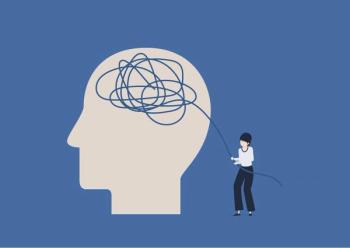
- Psychiatric Times Vol 27 No 10
- Volume 27
- Issue 10
The Perplexing History of ECT in Three Books
Despite these divergent books, it is important to avoid characterizing ECT as controversial. The Shorter-Healy and Dukakis books should dampen the controversy, because they characterize ECT as a safe, effective, and important treatment that psychiatry almost forgot. With its emotion-laden accusations and name-calling, the Andre book will inflame opinions.
Convulsive therapy, with chemically induced seizures, was first demonstrated in 1934 in Europe to relieve psychosis-particularly the catatonic type. Within 4 years, electrical induction (also known as electroconvulsive therapy, or ECT) was shown to be as effective and much easier to use. For the next 2 decades, ECT became the principal treatment for the severely mentally ill, especially the many thousands warehoused in state hospitals. Its use in psychiatric practice allowed many patients to avoid the stigma of hospital admission and remain at home to lead normal lives.
Introduced concurrently with insulin coma (1933) and lobotomy (1935), these 3 treatments were conflated in the public and professional psyche. As insulin coma and lobotomy fell into disuse because of their high morbidity and mortality rates, their demise contaminated the appreciation of ECT. Competition from psychotherapies and then from psychotropic drugs led to the widespread abandonment of ECT in the 1960s and 1970s.
Since the mid-1980s, doctors have gradually recognized that ECT can effectively relieve life-threatening conditions that would not otherwise be treated. This change in perspective, coupled with improvements in technique and safety, has resurrected its use throughout the world. Three recent books document this perplexing roller-coaster story.
Three books, three perspectives
In
Conversely,
Despite these divergent books, it is important to avoid characterizing ECT as controversial. The Shorter-Healy and Dukakis books should dampen the controversy, because they characterize ECT as a safe, effective, and important treatment that psychiatry almost forgot. With its emotion-laden accusations and name-calling, the Andre book will inflame opinions.
In Shock Therapy, Shorter and Healy describe the discoveries of ECT, insulin coma, and lobotomy; the personalities and experiences of the originators; the hazards of early treatments; and the dramatic changes that followed the introduction of anesthesia, muscle relaxants, and oxygenation. These modifications in technique reduced the risks of ECT and changed its negative image. Much attention is paid to the accuracy (or rather inaccuracy) of complaints of permanent, severe memory loss that deter the use of ECT; the role critics of ECT have played to restrict the treatment; and the social consequences of these restrictions. The book documents the irrational arguments that weaken its use and act as a bar to badly needed research in psychiatry.
The memoir by Dukakis and Tye describes Kitty Dukakis’s decades-long painful experiences with a complex depressive illness and the many unsuccessful medication trials that finally ended when she was treated with ECT. She describes the immediate relief following her first treatments and the sustained benefits of ongoing treatment. She also tells readers about the losses of familiarity and orientation that plagued her following the first ECT treatments and the ways that she coped and returned to healthy functioning as wife, mother, and active community member. Her writing is personal, similar in intensity to prize-winning writer William Styron’s memoir, Darkness Visible: A Memoir of Madness, in which he recounts his experience with mental illness. The chapters written by Tye offer details of the medical and social history of ECT.
In Doctors of Deception, Andre presents a very different story of ECT. She has often come onto the public stage as an implacable critic of ECT, motivated by a personal agenda. She became depressed when she was a young woman. Plagued by suicidal thoughts, she was hospitalized, was treated with ECT, and recovered from serious psychiatric illness. Complaining that she suffered losses of early life memories and claiming she had not been fully informed about the risks of the treatment, she sued her treating psychiatrists and hospital for malpractice, but her suit failed. She found a calling in the public advocacy group Committee for Truth in Psychiatry, and when founder Marilyn Rice died, Andre became the group’s leader. Andre’s account is filled with inaccuracies about the medical aspects of the history of ECT, with equally unfounded personal attacks on the clinicians who sustained interest in ECT.
Finding a middle ground
These books present disparate images of a much disparaged and censured-yet widely practiced-medical treatment. Shorter and Healy present a well-documented, carefully indexed, and readable classic history that is a guide for those interested in medical history, clinicians seeking the story behind psychiatric practice, and the patients and families seeking to understand the obstacles they face in search of effective psychiatric care.
Dukakis and Tye present a personal, warm, and encouraging story of the pain and suffering associated with severe depressive illness and of the attendant relief with the alleviation of symptoms, the fear of ECT by both the public and professionals, and the success when effective treatment is properly applied. This is a very useful guide for family members torn by the doubts of practitioners and friends and the intemperate condemnation by critics on the Internet when treatment is recommended.
Andre’s anger vilifies psychiatry and the psychiatrists who continue to offer ECT. Her Web site is strident as well, filled with the kinds of misconceptions that have successfully restricted and continue to obstruct the availability of the treatment. Her book is a triumph of misinformation.
All 3 books are essential reading for anyone interested in ECT. These books offer dramatically contrasting views of a psychiatric issue that is of interest to the public. At the end of the day, patients who have serious depression and other ill-nesses responsive to ECT-together with their friends and loved ones-should read these books and decide for themselves.
Articles in this issue
about 15 years ago
Combining High-Yield CBT Methods and Pharmacotherapy in Brief Sessionsabout 15 years ago
Moral Judgments and Emotional Painabout 15 years ago
Evaluative Disordersabout 15 years ago
Advice From Moody’s Dinerabout 15 years ago
“Morality” Professor Responsible for Research Misconductabout 15 years ago
Keys to Success in ADHD Treatmentabout 15 years ago
The Impact of Screen Media on Childrenover 15 years ago
Update on Autismover 15 years ago
What the Future HoldsNewsletter
Receive trusted psychiatric news, expert analysis, and clinical insights — subscribe today to support your practice and your patients.

















